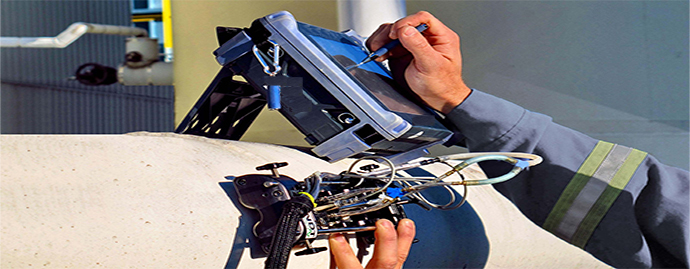| Start Date | End Date | Country | City |
|---|

 +966 920007771
+966 920007771

Objectives
To provide the designers, welding engineers and ambitious welders, welding inspectors with the important know how they need to do a good job. The course fills many gaps of knowledge they like to make it over.
Outlines
- Principles of Magnets and Magnetic Fields
- Theory of magnetic fields
- Earth’s magnetic field
- Magnetic fields around magnetized materials
- Theory of magnetism
- Magnetic poles
- Law of magnetism
- Materials influenced by magnetic fields
- Ferromagnetic
- Paramagnetic
- Magnetic characteristics of nonferrous materials
- Terminology associated with magnetic particle testing
- Characteristics of Magnetic Fields
- Bar magnet
- Ring magnet
- Effect of Discontinuities of Materials
- Surface cracks
- Scratches
- Subsurface defects
- Magnetization by Means of Electric Current
- Circular field
- Field around a straight conductor
- Right-hand rule
- Field in parts through which current flows
- Long, solid, cylindrical, regular parts
- Irregularly shaped parts
- Tubular parts
- Parts containing machined holes, slots, etc.
- Methods of inducing current flow in parts
- Contact plates
- Prods
- Discontinuities commonly discovered by circular fields
- Longitudinal field
- Field produced by current flow in a coil
- Field direction in a current-carrying coil
- Field strength in a current-carrying coil
- Discontinuities commonly discovered by longitudinal fields
- Advantages of longitudinal magnetization
- Disadvantages of longitudinal magnetization
- Selecting the Proper Method of Magnetization
- Alloy, shape and condition of part
- Type of magnetizing current
- Direction of magnetic field
- Sequence of operations
- Value of flux density
- Inspection Materials
- Wet particles
- Dry particles
- Principles of Demagnetization
- Residual magnetism
- Reasons for requiring demagnetization
- Longitudinal and circular residual fields
- Basic principles of demagnetization
- Retentivity and coercive force
- Methods of demagnetization
- Magnetic Particle Testing Equipment
- Equipment selection considerations
- Type of magnetizing current
- Location and nature of test
- Test materials used
- Purpose of test
- Area inspected
- Manual inspection equipment
- Medium- and heavy-duty equipment
- Stationary equipment
- Mechanized inspection equipment
- Semiautomatic inspection equipment
- Single-purpose semiautomatic equipment
- Multipurpose semiautomatic equipment
- Fully automatic equipment
- Types of Discontinuities Detected by Magnetic Particle Testing
- Inclusions
- Blowholes
- Porosity
- Flakes
- 5 Cracks
- Pipes
- Laminations
- Laps
- Forging bursts
- Voids
- Magnetic Particle Test Indications and Interpretations
- Indications of nonmetallic inclusions
- Indications of cracks
- Indications of surface seams
- Indications of laminations
- Indications of laps
- Indications of bursts and flakes
- Indications of porosity
- Nonrelevant indications
Who Should Attend
Engineers and highly qualified technicians working, in the design, manufacturing and testing of welded structures.
Duration
3 Days










